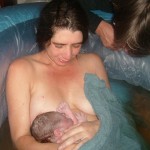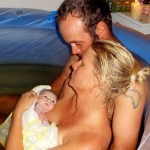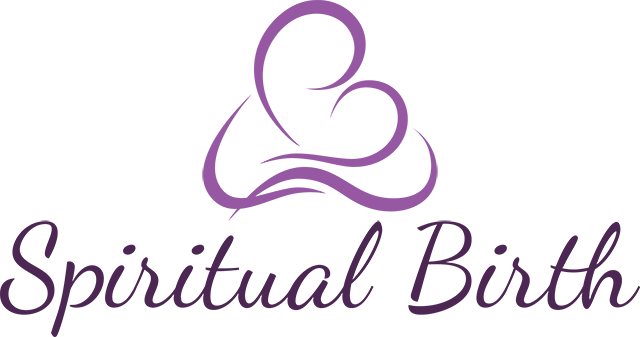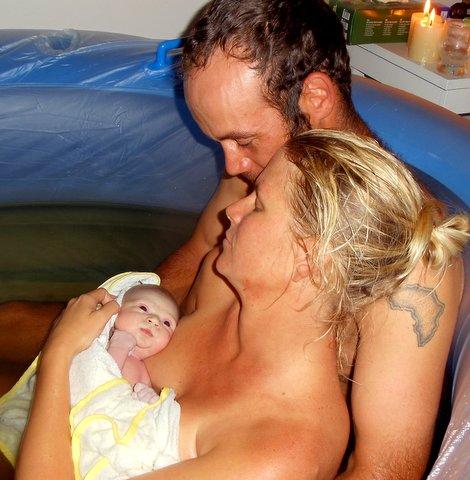Water does many things for a woman in labour. Firstly, It provides her with a feeling of privacy and seclusion when she feels vulnerable. Immersed in warm water during labour women are able to relax.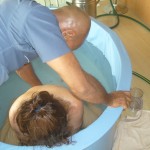
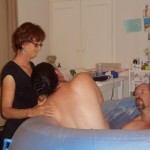
Not only does warm water aid relaxation, it also lowers arterial blood pressure and can be used in higher risk women such as women with hypertension or pre-eclampsia, to lower the blood pressure. Being immersed in warm water seems to facilitate more rapid dilation of the cervix, the mouth of the womb, as well as the rapid expulsion reflex as a mother pushes her baby out of her body. Babies will usually not breathe underwater as long the temperature of the water is between 34-38 degrees centigrade and the cord is still attached. The cord must NEVER be cut underwater before the baby has surfaced, as the baby is still receiving his oxygen supply via the umbilical cord before his transition to air.
A mother should always get into water of her own volition and if she wishes to leave the water, a midwife must listen, respect and follow. Waterbirth has been shown to be as safe as birth on land for the baby when certain criteria are followed. Neither mother nor baby should show signs of distress or prolonged second stage and waterbirth is best undertaken by moms with low risk pregnancies. Waterbirth is not recommended when thick meconium (baby’s poo) is visibly present in the amniotic fluid before birth. There are two recommendations made by Dr Michel Odent: Firstly, don’t plan a waterbirth, rather have a warm tub of water available to use during labour. Secondly the water should not be too warm and a mother should enter the water only once labour is active, that is, after 5cm dilation at least. This facilitates the best use of the aqua-environment for labour and birth.
Waterbirth is experienced my mothers as gentle and empowering. The baby lives in water for nine months and waterbirth is a smooth transition to land. It is the most amazing privilege to be present as a midwife at a waterbirth and to observe the way a baby will seek eye contact after birth and connect with his or her parents. These are holy moments and I am filled with reverence.
